Discover the magic of 10 essential herbs for your kitchen garden! Elevate your cooking & health with these aromatic wonders
In the vibrant landscape of Indian cuisine, where spices reign supreme, fresh
herbs often play the unsung heroes, adding layers of flavour, aroma, and medicinal benefits to our everyday dishes. Forget those wilted, store-bought bunches!
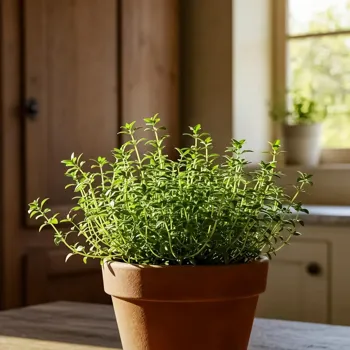
Imagine stepping into your own backyard, a mini-oasis brimming with fragrant herbs ready to elevate your culinary creations.
A kitchen garden stocked with these essential herbs is not just a convenient luxury; it's an investment in your health, well-being, and the overall deliciousness of your meals. Whether you have a sprawling garden or a sunny balcony, growing your own herbs is easier than you think.
So, ditch the dependence on packaged herbs and embark on a flavourful journey with these ten must-have herbs for your Indian kitchen garden!
Coriander (Dhaniya): The King of Garnishes and More
No Indian kitchen is complete without coriander, locally known as dhaniya. This versatile herb is a staple in almost every Indian household, adding a fresh, citrusy note to curries, dals, chutneys, and salads.
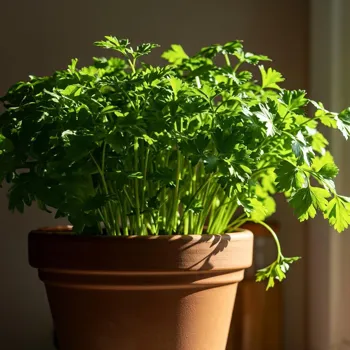
Both the leaves and the seeds (coriander seeds or dhaniya powder) are widely used in Indian cooking. Fresh coriander leaves are best added towards the end of cooking to retain their flavour and vibrant green colour.
Beyond its culinary uses, coriander is also known for its digestive properties and is a good source of Vitamin C. Growing coriander is relatively easy; it thrives in well-drained soil and partial shade. You can start from seeds and harvest the leaves regularly.
If you allow the plant to flower, you'll get coriander seeds, adding another valuable ingredient to your spice rack. Keep in mind that coriander tends to bolt (go to seed) quickly in hot weather, so providing some shade during the hottest part of the day can help prolong its leaf production.
Remember to water your coriander plants regularly, but avoid overwatering, as this can lead to root rot. A simple tip for keeping your coriander fresh for longer is to store it in a glass of water in the refrigerator, covering the leaves with a plastic bag.
This will help keep it crisp and prevent it from wilting.
Mint (Pudina): The Refreshing Coolant
Mint, or pudina, is another essential herb in Indian cooking, prized for its cooling and refreshing properties. It's a popular ingredient in chutneys, raitas, beverages like lemonade and jal jeera, and even biryanis.
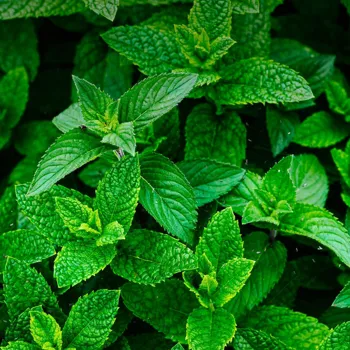
Mint is known for its digestive benefits and is often used to soothe an upset stomach. There are several varieties of mint, including spearmint and peppermint, each with its unique flavour profile. Mint is incredibly easy to grow and can quickly spread if not contained.
It's best to grow it in a pot to prevent it from taking over your entire garden. Mint prefers moist soil and partial shade. You can propagate mint from cuttings or by dividing the roots. Regular harvesting encourages bushier growth and prevents the plant from becoming leggy.
A simple way to enjoy the refreshing taste of mint is to add a few leaves to your water bottle or make a refreshing mint tea. For a unique twist, try adding mint to your next batch of vegetable pulao or stir-fry. The possibilities are endless!
Curry Leaves (Kadhi Patta): The Aromatic Wonder
Curry leaves, or kadhi patta, are indispensable in South Indian and West Indian cuisine. These aromatic leaves add a distinct, nutty flavour to curries, dals, and vegetable dishes.
Curry leaves are also believed to have medicinal properties and are often used in Ayurvedic medicine to improve digestion and promote hair growth. Growing a curry leaf plant requires patience, as it can take some time to establish. It prefers warm climates and well-drained soil.
You can grow it from seeds or from a sapling. Curry leaf plants need plenty of sunlight and regular watering. The flavour of curry leaves is best when they are fresh, so it's ideal to have a plant in your garden.
To enhance the flavour of curry leaves, you can temper them in oil before adding them to your dish. Simply heat some oil in a pan, add the curry leaves, and let them sizzle for a few seconds until they release their aroma. Be careful not to burn them, as this can make them taste bitter.
Use the infused oil in your cooking for a delightful flavour boost. Besides cooking, you can dry the leaves and store them in an airtight container for later use, although the flavour will be less intense than fresh leaves.
Holy Basil (Tulsi): The Sacred Healer
Holy basil, or tulsi, is not just a culinary herb; it's also a sacred plant revered in Hinduism for its medicinal and spiritual properties. Tulsi has a slightly peppery and clove-like flavour that adds a unique touch to teas, soups, and stir-fries.
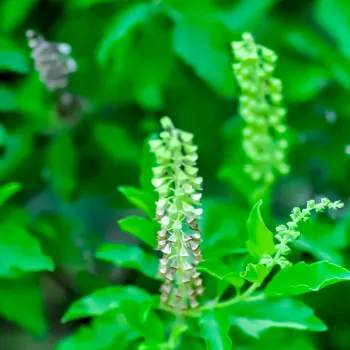
It's known for its antioxidant and anti-inflammatory properties and is often used to boost immunity and relieve stress. Tulsi is relatively easy to grow and thrives in warm, sunny conditions. You can start from seeds or from cuttings. Tulsi plants need well-drained soil and regular watering.
Pruning the plant regularly encourages bushier growth. In addition to its culinary uses, tulsi is also used in traditional medicine to treat a variety of ailments. Fresh tulsi leaves can be chewed directly or added to tea to relieve coughs and colds.
You can also make a tulsi decoction by boiling the leaves in water. The aroma of tulsi is also believed to have calming effects and can help reduce stress and anxiety. Planting tulsi in your home is not only beneficial for your health but also adds a touch of spirituality to your surroundings.
Fenugreek (Methi): The Bitter-Sweet Delight
Fenugreek, or methi, is a versatile herb with both its leaves and seeds used extensively in Indian cooking. Fresh fenugreek leaves have a slightly bitter taste that adds a unique flavour to curries, dals, and vegetable dishes like aloo methi.
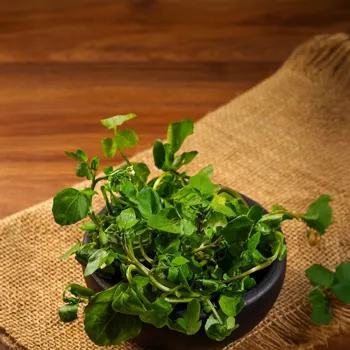
Fenugreek seeds are also used as a spice and have a slightly bitter, maple-like flavour. Fenugreek is known for its medicinal properties and helps control blood sugar levels. Growing fenugreek is relatively easy; it thrives in well-drained soil and full sun.
You can start from seeds and harvest the leaves regularly. To reduce the bitterness of fenugreek leaves, you can soak them in salted water for a few minutes before cooking. Fenugreek seeds can be sprouted and added to salads or sandwiches for a nutritional boost.
They are also a rich source of protein and fibre. In addition to its culinary uses, fenugreek is also used in traditional medicine and helps boost milk production in lactating mothers. A simple way to enjoy the benefits of fenugreek is to add a teaspoon of fenugreek seeds to your water bottle.
Lemongrass: The Zesty Fragrance
Lemongrass, with its citrusy aroma and refreshing flavour, is gaining popularity in Indian kitchens. While not traditionally used in all regional cuisines, its adaptability makes it a wonderful addition. It adds a zesty fragrance to soups, stews, and teas.
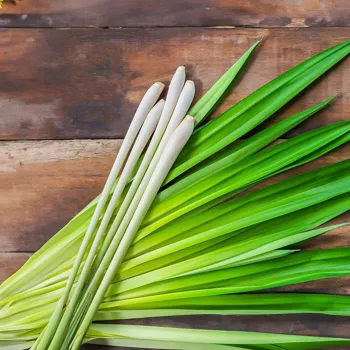
It's a staple in Southeast Asian cuisine and is now being incorporated into innovative Indian dishes and beverages. Lemongrass is fairly easy to grow in pots, preferring well-drained soil and plenty of sunlight. Propagate from cuttings and ensure regular watering, especially during hot weather.
Harvest by cutting stalks close to the base. For teas, bruise the stalk to release its aroma or chop finely for curries and soups. Lemongrass oil is also used in aromatherapy for its calming properties, making this herb a true multi-tasker.
Try adding lemongrass to your next vegetable stock for an aromatic twist or infuse it with your favourite tea blend for a refreshing and healthy beverage. Let lemongrass transport you to a world of culinary exploration and wellness.
AI Generated Content. Glance/InMobi shall have no liability for the content